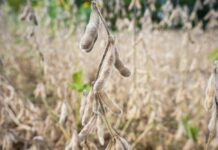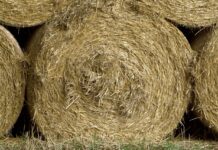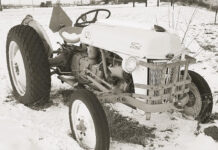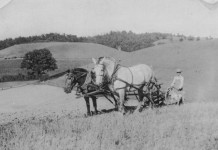Water is one of the most critical resources for livestock, as it directly impacts their health, productivity and overall well-being. Like humans, animals require water to carry out vital bodily functions, such as digestion, temperature regulation and waste elimination.
Understanding the different sources of water for livestock is key for farmers and ranchers to ensure that their animals are hydrated, healthy and productive.
Water for livestock
Water is necessary for various physiological processes in livestock, including hydration, digestion, temperature regulation and milk production. Livestock need water to maintain body functions, as dehydration can lead to reduced growth, weight loss and even death. Water helps in the digestion of feed, including the breakdown of food in the stomach and absorption of nutrients in the intestines.
Animals use water to regulate their body temperature, particularly in hot climates. Adequate water intake helps animals cope with heat stress. And for dairy cattle, water is a key component of milk production. A cow typically needs about three to five times the amount of water as feed to produce milk.
Common water sources
Livestock rely on a variety of water sources to meet their hydration needs, depending on the location, climate and type of farming operation.
Surface water sources are those that are found naturally on the Earth’s surface, such as rivers, ponds, lakes and reservoirs. These are common sources of water for livestock, especially on large farms or ranches.
Many livestock farms are located near rivers and streams, which provide a continuous flow of water. These sources are often the most convenient and cost-effective option for large herds.
Natural or artificial ponds and lakes are another common source. However, the quality of water in ponds can sometimes be an issue, as they can become polluted with algae, waste or other contaminants that can harm the animals.
On larger operations, farmers may build artificial reservoirs to store water. These reservoirs often provide a reliable water source during periods of drought or in regions with limited rainfall.
Groundwater
Groundwater is water that exists beneath the Earth’s surface in aquifers. It is accessed through wells, boreholes or springs. Groundwater is often used in areas where surface water is scarce or unreliable.
Dug or drilled wells tap into underground aquifers to provide a steady supply of water. Wells are especially useful in areas where surface water is not available or is of poor quality.
Springs occur when groundwater naturally flows to the surface, providing a clean and constant water source. Springs are less common but are ideal sources of water for livestock.
Watering systems
Once a water source is available, how the water is delivered to livestock is crucial.
Several methods of watering systems ensure that animals receive clean, adequate water. Troughs are the most common method used to supply water to livestock. These can be manually filled or connected to automated systems that allow the animals to drink freely. Automatic waterers use sensors to detect when water levels are low and refill the trough automatically. They are often used in large-scale operations where consistent water availability is essential.
Water quality considerations
While having access to water is essential, the quality of that water is equally important. Contaminated water can harm livestock and reduce productivity.
The key factors to consider include cleanliness, temperature, salinity and pH level. Water should be free of dirt, algae, chemicals and other pollutants that can cause disease or contamination. Regular cleaning of water containers and troughs is essential. Water that is too hot or too cold can deter animals from drinking. In extremely cold climates, water may need to be heated to prevent freezing. In hot climates, providing cool water can encourage drinking.
Water that is too salty can be harmful to livestock, leading to dehydration and other health problems. Salinity levels should be regularly tested to ensure they are within safe ranges for the specific type of livestock. The pH level of water should also be monitored. Water that is too acidic or alkaline can lead to health issues for the animals and interfere with nutrient absorption.
Sustainable livestock farming
Water scarcity is becoming an increasing concern globally, particularly in regions that experience droughts or climate variability. Sustainable water management practices, including conservation, monitoring and maintenance and planning, are essential to ensure that livestock farms continue to have access to sufficient water supplies.
Implementing water-efficient systems like water recycling and efficient irrigation techniques for pastures can reduce water consumption and waste. Regular maintenance and monitoring of water systems can ensure that the water remains clean and that leaks or inefficiencies are addressed promptly. Finally, farmers should develop a water management plan that takes into account the needs of their livestock, the seasonal availability of water and potential climate-related challenges.
Conclusion
Water is a fundamental resource for livestock and is critical for maintaining animal health and productivity. Understanding the various water sources available, such as surface water, groundwater and rainwater, along with the proper management of water quality and distribution systems, ensures that livestock have consistent and safe access to water.
Sustainable water management practices will be key in meeting the future demands of livestock farming and addressing the challenges posed by water scarcity in many parts of the world.













